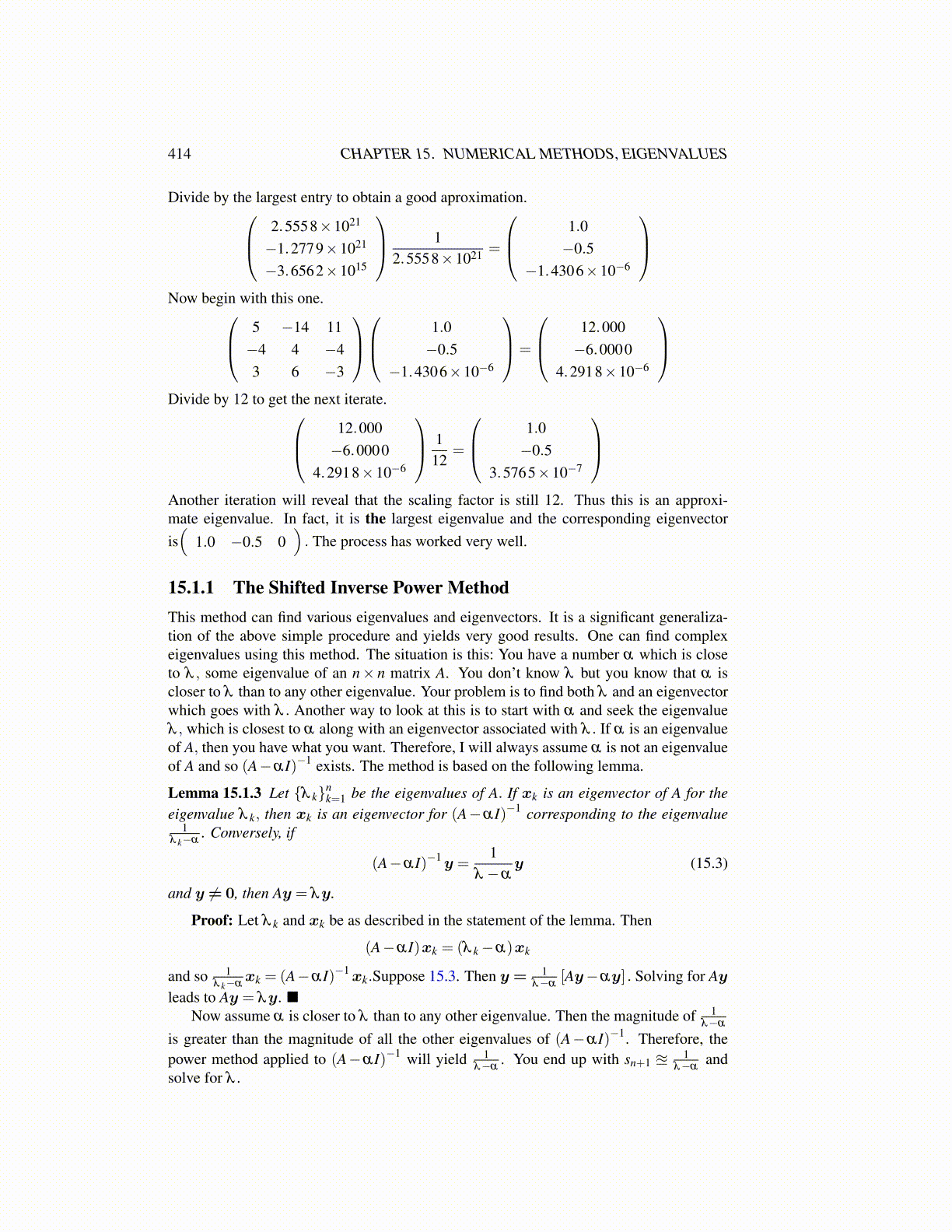
414 CHAPTER 15. NUMERICAL METHODS, EIGENVALUES
Divide by the largest entry to obtain a good aproximation. 2.5558×1021
−1.2779×1021
−3.6562×1015
12.5558×1021 =
1.0−0.5
−1.4306×10−6
Now begin with this one. 5 −14 11
−4 4 −43 6 −3
1.0
−0.5−1.4306×10−6
=
12.000−6.0000
4.2918×10−6
Divide by 12 to get the next iterate. 12.000
−6.00004.2918×10−6
112
=
1.0−0.5
3.5765×10−7
Another iteration will reveal that the scaling factor is still 12. Thus this is an approxi-mate eigenvalue. In fact, it is the largest eigenvalue and the corresponding eigenvectoris(
1.0 −0.5 0). The process has worked very well.
15.1.1 The Shifted Inverse Power MethodThis method can find various eigenvalues and eigenvectors. It is a significant generaliza-tion of the above simple procedure and yields very good results. One can find complexeigenvalues using this method. The situation is this: You have a number α which is closeto λ , some eigenvalue of an n× n matrix A. You don’t know λ but you know that α iscloser to λ than to any other eigenvalue. Your problem is to find both λ and an eigenvectorwhich goes with λ . Another way to look at this is to start with α and seek the eigenvalueλ , which is closest to α along with an eigenvector associated with λ . If α is an eigenvalueof A, then you have what you want. Therefore, I will always assume α is not an eigenvalueof A and so (A−αI)−1 exists. The method is based on the following lemma.
Lemma 15.1.3 Let {λ k}nk=1 be the eigenvalues of A. If xk is an eigenvector of A for the
eigenvalue λ k, then xk is an eigenvector for (A−αI)−1 corresponding to the eigenvalue1
λ k−α. Conversely, if
(A−αI)−1y =1
λ −αy (15.3)
and y ̸= 0, then Ay = λy.
Proof: Let λ k and xk be as described in the statement of the lemma. Then
(A−αI)xk = (λ k−α)xk
and so 1λ k−α
xk = (A−αI)−1xk.Suppose 15.3. Then y = 1λ−α
[Ay−αy] . Solving for Ayleads to Ay = λy. ■
Now assume α is closer to λ than to any other eigenvalue. Then the magnitude of 1λ−α
is greater than the magnitude of all the other eigenvalues of (A−αI)−1. Therefore, thepower method applied to (A−αI)−1 will yield 1
λ−α. You end up with sn+1 ≊ 1
λ−αand
solve for λ .